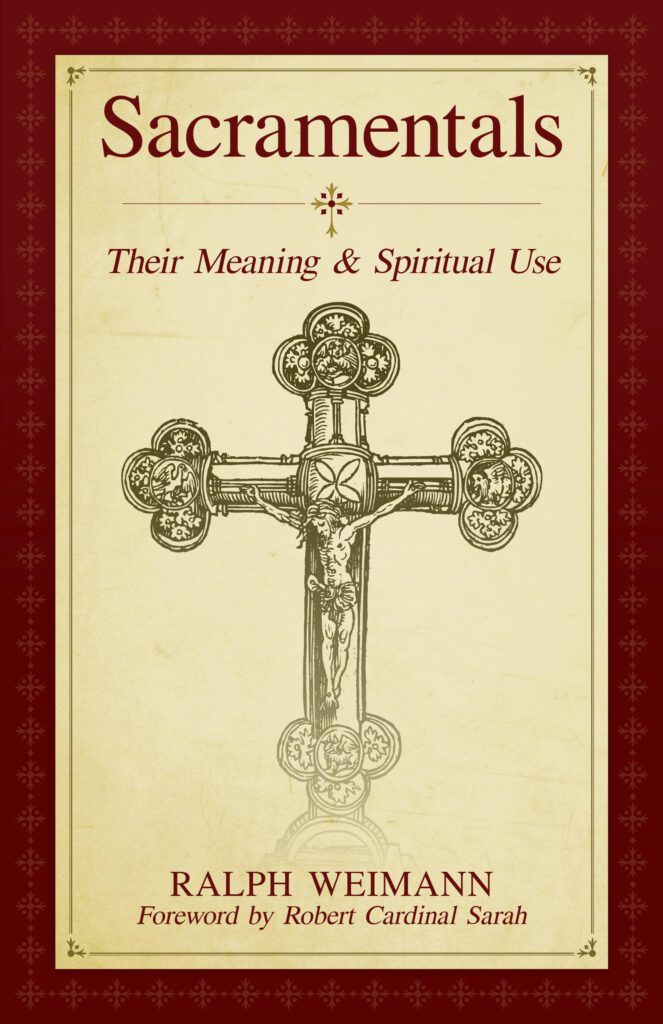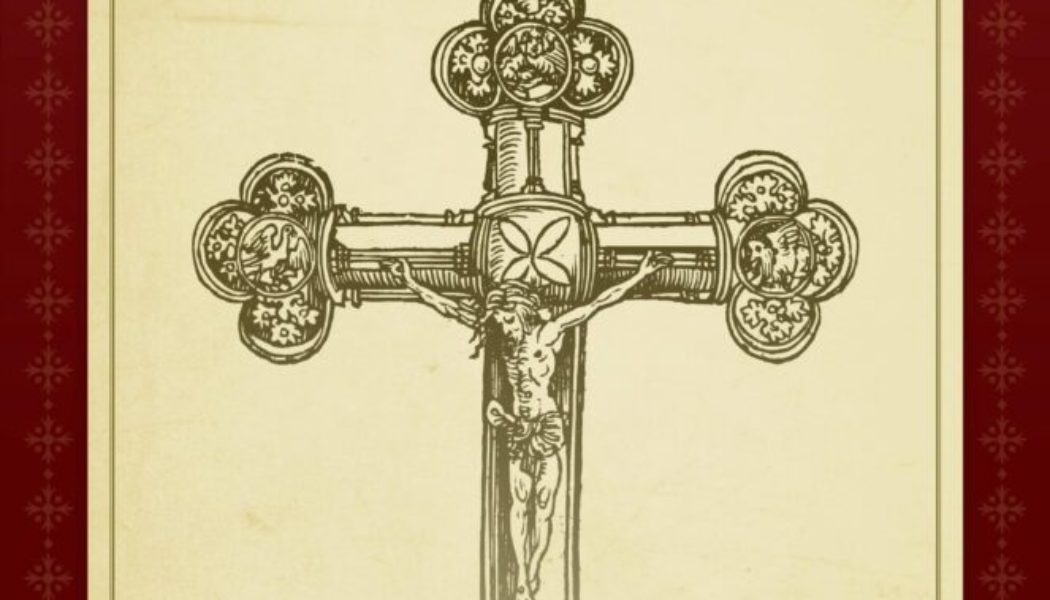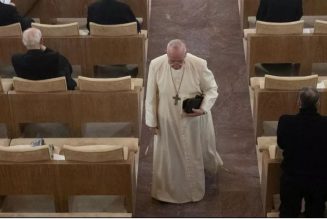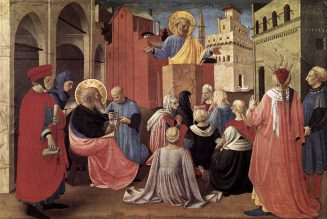Sacramentals: Their Meaning & Spiritual Use by Ralph Weimann Manchester, NH: Sophia Institute Press, 2023. 368 pp. ISBN: 978-1644139493. $18.95 Paperback.
After any given Sunday Mass, it is not unusual to see a person or a group of people holding up various religious medals, rosaries, etc. to be blessed by a priest. In a matter of minutes, typically one sees a priest make the sign of the cross while audibly offering some type of extemporaneous prayer regarding the object itself and the person who will use the religious article. On a rare occasion, you may see a priest use the Book of Blessings, sprinkle holy water, and wear a stole. All these activities are celebrations of sacramentals. The caricature within the Church is that the use of sacramentals and acts of piety is limited to older women who attend daily Mass. For these reasons, Father Ralph Weimann’s book, Sacramentals: Their Meaning & Spiritual Use is a welcome addition to the limited literature on this topic.

The book is divided into two parts: 1) Theological Foundation of the Sacramentals and 2) Pastoral Consideration of the Sacramentals. In the first part, Weimann is able to differentiate between the four categories of sacramentals: consecrations/dedications, blessings, exorcisms, and sacred objects/places. This last category is distinct—and helpful—in that often people categorize sacred objects/places with either consecrations or blessings. Weimann develops a laudable chapter on the theological nature of sacramentals that situates them within the economy of salvation, treating their scriptural, Christological, ecclesiological, and liturgical aspects. The unique contributions of Weimann on the subject of sacramentals are his treatment of them in relationship to the sacraments and his critique of the principles behind the development of the revised rites for sacramentals and blessings present within De Benedictionibus (The Book of Blessings). The latter in his estimation represents a serious rupture from the living Tradition of the Church.
Sacramentals and Sacraments
The Psalmist prays, “Our help is in the name of the Lord, who made heaven and earth” (Psalm 124:8). The Sacred author reminds us that the gift of creation involves the spiritual and the material—the invisible gift of grace and the visible signs apprehensible via the senses. Sacramentals are gifts instituted by the Church, which sanctify objects and/or actions and remind us that not only religious but ordinary and everyday rhythms of life can be sanctified in our journey towards God. Weimann’s work underscores the importance of sacramentals as a source of grace and sanctification that simultaneously have a close relationship with the sacraments and a distinct role in the Church as a potential source of grace.
The development of the Church’s teaching on sacramentals is relatively recent. The term “sacramentals” was not used until the scholastic period of theology in the 12th century. During that period, sacramentals referred to the “ritual ceremonies within celebrations of the sacraments” and only gradually over time were sacramentals distinguished from the sacraments, notably because of the Council of Trent’s distinct use of “ceremonies” or “rites” when discussing the administration of the sacraments. In the Post-Tridentine period, “ceremonies” would be used in references to “rites of the sacraments that did not pertain to their substance,” whereas “sacramentals” referred to “things and actions employed outside the sacraments” (14). Finally, in the 20th century, the Church offered the first official definition of sacramentals in the 1917 Code of Canon Law: “Sacramentals are things or actions that the Church, in a certain imitation of the Sacraments, is wont to use to obtain, by her imprecation, effects that are primarily spiritual” (can. 393).
The Church will continue to emphasize the close relationship between sacramentals and the sacraments. The Second Vatican Council document on the liturgy Sacrosanctum Concilium defines sacramentals as “sacred signs which bear a resemblance to the sacraments” and which dispose the faithful “to receive the chief effect of the sacraments, and various occasions in life are rendered holy” (§60). Weimann highlights the consistency with which the 1983 Code of Canon Law defines sacramentals in conjunction with Sacrosanctum Concilium: “Sacramentals are sacred signs by which effects, especially spiritual effects, are signified in some imitation of the sacraments and are obtained through the intercession of the Church” (can. 1401). Weimann notes that the Catechism of the Catholic Church 1667 will continue to outline the structure of sacramentals in the same way as the teaching of the Second Vatican Council and the 1983 Code of Canon Law.
Although there is a close relationship between sacramentals and sacraments, one of the major distinctions is that the sacraments offer grace ex opere operato because Christ instituted them and as such he is always the one who baptizes, confirms, etc. when the sacraments are celebrated. Sacramentals offer the gift of grace solely ex opere operantis Ecclesiae, which means that the effectiveness of sacramentals is based upon the devout participation on the part of both the minister and recipient in Christ’s action to obtain spiritual fruits (pp. 141-142). The importance of the universal call to holiness and the complementarity between the ministerial and common priesthood is of serious consequence for the fruitfulness of sacramentals. The degree to which either the minister or the recipients separate themselves from God through sin or respond generously to the life of grace affects the abundance (or lack thereof) of spiritual fruits.
Reform or Rupture?
Throughout his work, Weimann emphasizes the importance of the “hermeneutic of reform” in continuity and fidelity to the Tradition of the Church. Consequently, Weimann emphasizes the importance of Pope Benedict XVI’s Motu Propio Summorum Pontificum because it allows access to the whole of Tradition. Weimann consistently maintains the view that “the venerable vetus form [of celebrating the liturgy, the sacraments, and sacramentals] must be considered the princeps analogatum (valid point of reference), and the new form must be measured according to the living Tradition of the Church. This is apparent in the formula of each sacramental, which, when said properly, is a prayer of the Church of all times” (101). This point of departure will be important to understand the tension between authentic organic development and a so-called reform that brings about a rupture with the Tradition.
The revision for the norms and rites for sacramentals within the Church would follow the liturgical movement’s emphasis upon a need to promote active participation and to carry out reforms in light of Sacred Scripture and the practice of the Early Church. Weimann voices concern that these reforms were implemented by experts who in the estimation of Annibale Bugnini, the key figure in the post-conciliar liturgical reform, were “architects, craftsmen, and specialized workers” (102). The mere description of these so-called experts indicates that they are interested in making or fabricating the celebration of the liturgy instead of maintaining their organic growth and development. Drawing upon the research of the Oratorian liturgist Uwe Michael Lang, Weimann highlights some of the problematic principles developed by the French Dominican liturgist, Pierre-Marie Gy, who will drive the reforms that culminate in De Benedictionibus.
Gy maintains the position that the reforms for sacramentals must address contemporary culture’s tendency towards desacralization and secularization (106). While the early Church used various blessings, the present times called for change which would result in the abandonment of essential parts of the Tradition. One example is the traditional blessing of wine on the feast of St. John the Evangelist that had become obsolete in Gy’s estimation because “blessings should be invoked primarily on persons rather than on things and places” in order “to combat superstition” (107). For this reason, Gy also favored the abandonment of the apotropaic elements, the prayers of purification and exorcism that were the standard part of the blessing of objects such as water, oil, and salt. In many of the revised blessings, the sign of the cross was to be omitted, which is fundamental if an object is truly being blessed. Weimann highlights a decree issued by the Congregation for Divine Worship and the Discipline of the Sacraments (2002) to correct this serious omission. The decree states that a blessing given by a sacred minister (a bishop, priest, or deacon) must be accompanied by the sign of the cross (110-111).
Pastoral Considerations
In the second half of the book, Weimann presents sacramentals as an opportunity for evangelization “to guide people towards the sacraments, to change their lives, and to grow in friendship with Jesus Christ, from whom sacramentals draw their spiritual power” (147). Once again, Weimann emphasizes the importance of personal holiness, which makes sacramentals more effective and fruitful.
Highlights in the latter part of the book include his focus on the power and efficacy of the name of Jesus Christ and the distinction between imperative and deprecative invocations of Jesus’ name. An imperative invocation is a direct form of invoking the name of Jesus Christ, whereas with a deprecative invocation “something or someone is addressed indirectly in the name of Jesus Christ” (161). Notably, Weimann underscores the potential fruits that are attainable via the invocation of the name of Jesus Christ: purification, sanctification, and justification; liberation and protection against demonic actions; healing; and salvation (163). The name of Jesus Christ can be invoked by anyone anywhere with varying degrees of efficacy and fruitfulness. In close connection with the name of Jesus Christ, Weimann also develops a separate chapter to emphasize the importance of the sign of the cross as a source of sanctification, justification, healing, and strength in the spiritual battle.
The chapter on exorcisms offer great spiritual insight into both the ordinary and extraordinary way that the Evil One and the fallen angels seek to undermine the faithful in their journey towards God and the importance of anti-demonic character in sacramentals and exorcisms in addressing the four types of extraordinary diabolical action: infestation, vexation, obsession, and possession. The most important insight from this chapter is the renewed emphasis on our need to be aware of the spiritual combat: “exorcism is not a magical formula; it requires a virtuous life—a life of prayer, a life in the presence of God and based on the intercession of the saints and angels, as well as frequent participation in the sacraments—in short a life that trains, prepares, arms, and protects a person for spiritual combat” (258). There are profound implications for the faithful willing to ponder the need to engage in the spiritual combat actively.
The final chapter of Weimann book focuses on the broad topic of blessings of the Church. The principal blessings used by the Church are contained in the Roman Ritual (Book of Blessings), the Roman Pontifical, and The Ceremonial of Bishops. Weimann reiterates his critiques of the new ritual: the absence of apotropaic elements, the omission of the sign of the cross, and the proliferation of options. Additionally, he notes that the present ritual is unreasonable and impractical (289): the new ritual calls for a gathering of the faithful, reading from scripture, song(s) or suitable hymn(s), brief catechesis, intercessions, a blessing of the person(s) who wanted an object blessed, and a common blessing of the faithful gathered together. It is easy to see why ministers opt for the shorter form, which oftentimes has been improvised on the spot. Weimann concludes the chapter by treating three commonly used sacramentals: holy water, the St. Benedict Medal, and the Miraculous Medal. The current Book of Blessings no longer offers the blessing of holy water with the traditional apotropaic elements and it omits the blessings that are specific to the nature of these respective medals.
A Keeper
Father Ralph Weimann’s book should be on the shelf of every bishop, priest, deacon, and lay catechist. It should be used in seminary and undergraduate classes on sacraments. This work is certainly not for the general faithful, but it will be profitable for anyone who wants a deeper dive into the theology and meaning of sacramentals. If there is a second edition of the book, it would be profitable to include an index and more appendices of blessings from the older Ritual. This book will offer readers an opportunity to think critically about the liturgical reform the efficacy and fruitfulness of many of the sacramentals. Weimann’s work will also be helpful to read in conjunction with the recent declaration, Fiducia Supplicans, “On the Pastoral Meaning of Blessings,” which was published by Dicastery on the Doctrine of the Faith. This book may become an invaluable resource for clergy as they discern how to apply the pastoral directives outlined in this declaration. Weimann rightfully roots pastoral practice in the doctrine of the Church, and consequently he safeguards the care for which we should have with respect to all sacramentals. Although there may be a development in new sacramentals, pastoral practice should never undermine doctrine. In a culture that is increasingly secular and hostile to religion, we would benefit from the regular and efficacious use of sacramentals. St. Paul reminds us that our battle is not against “flesh and blood,” so we need the graces that come forth from sacramentals which can serve as a means of liberation and protection from the “powers and principalities” and purification from the effects of sin (Ephesians 6:12).








